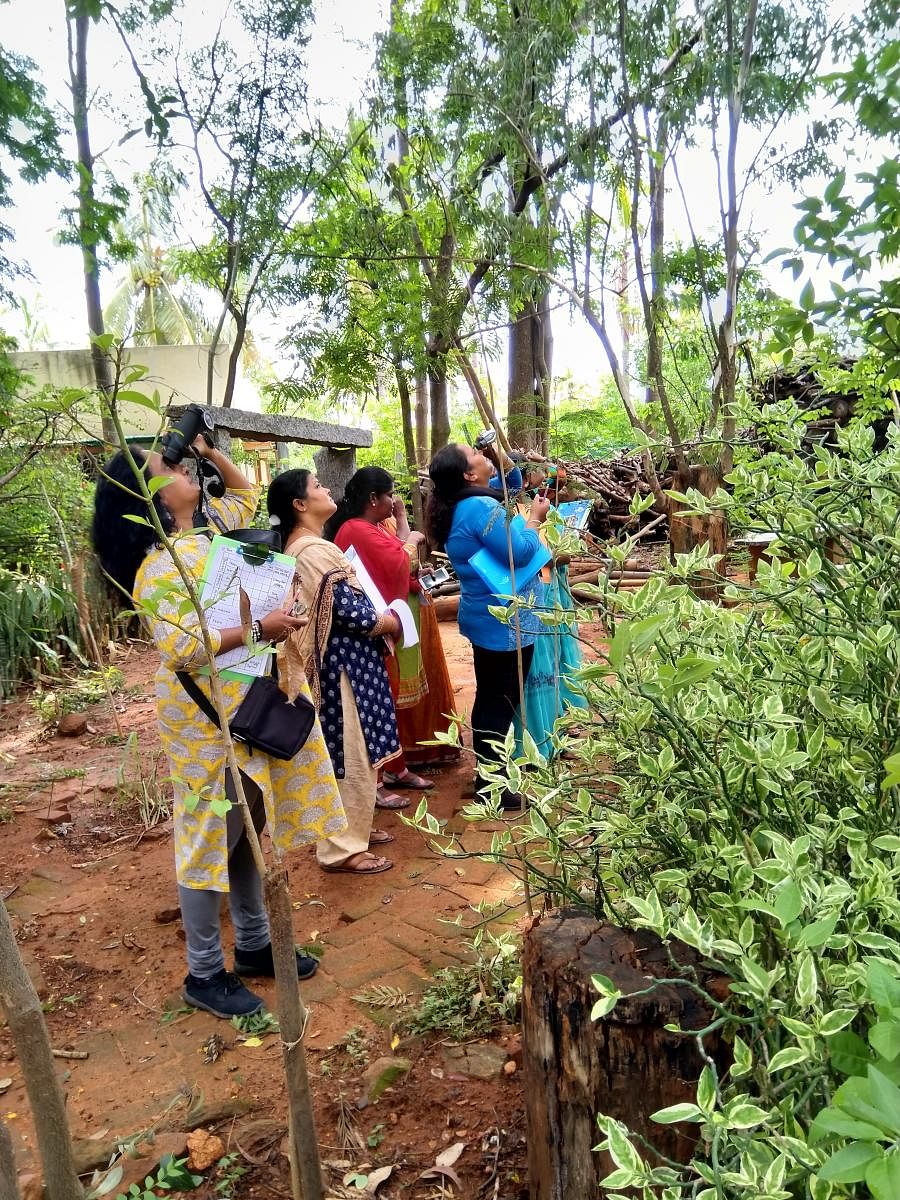Imagine if lessons in schools were a trip to the olden days when you were in the comapny of nature!
Sure, most natural-world learning interventions in schools nowadays mean going out for a nature walk or exploring the outdoors on weekends. But, are these activities enough to help children understand the natural world and build a relationship with it? No.
Vena Kapoor and her team from the Nature Conservation Foundation are working to change this.
In collaboration with schools, academic professionals, designers, illustrators et al, Vena and her team craft modules of learning based in the natural world. In time, they hope to make them classroom-friendly and integral to every child’s education.
They aim to cultivate a sense of wonder and love for nature in children, help them build empathy for non-humans, which would lead to action-oriented decision-making abilities as adults.
Vena tells Spectrum about the work so far:
Urban milieu and access to nature...
A growing body of research points to what children who have little or no access to the outdoors may have to bear — isolation, lower retention rates of learning, aggressive behaviour and depression. Nature-Deficit Syndrome is now an accepted term for people who have no or little access to nature. Or the new phenomenon called Shifting Baseline Syndrome, where each generation has a different yardstick to measure what is an acceptable exposure to nature and the outdoors based on what they see around them.
We are losing out on green outdoor spaces, bird songs, sights of butterflies and dragonflies, the occasional mongoose, shade of a tree, the joy of swinging from it, plucking leaves, fruits etc. How can we expect our children to empathise with fellow humans and other creatures if they feel no love or wonder towards them?
The learning modules draw examples from the natural world...
Most of the modules and discussions are planned as enquiry-based. We encourage younger children to use various senses to feel and experience nature.
In an urban set-up, it’s common among children and teachers to feel disconnected with nature. The non-preachy solution to this is...
As a community we often tend to emote false superiority about our knowledge of nature — in identifying various taxa and being sensitive about ecological processes and environmental issues. Often, we can lose our audience because of this, especially if our engagement with them is not in a sustained manner. With this in mind, all our collaborations with teacher groups/educators begin with us stressing that we want to bring in nature and discuss what might or might not work in their school spaces. As a result, our interventions have become bespoke models.
We are losing out on green outdoor spaces, bird songs, sights of butterflies and dragonflies, the occasional mongoose, shade of a tree, the joy of swinging from it, plucking leaves, fruits etc. How can we expect our children to empathise with fellow humans and other creatures if they feel no love or wonder towards them?
But what about the content in Environmental Studies textbooks?
There have been a few discrepancies. Since we took a strategic decision to work across different school boards and types, we have to use specific textbooks. While all the boards are required to follow the NCERT curriculum guidelines, State boards and private schools use different textbooks, and teachers are made to follow the same.
A problem we have come across is the lack of continuity both within a class book and across the classes, and this has been pointed out by various education professionals and pedagogy experts for many years now. We are in the process of compiling our thoughts on this once we have more experience after testing our modules.
We are also documenting some of the more factual errors. For example, in the Standard 2 textbook of the Karnataka Board, there is a ‘match the following section’. Students have to match the animal to its home. Most are fairly straightforward, like the cow to the shed. But then the option for a snake is a termite mound. While snakes sometimes use termite mounds as a safe space, they are not homes — this kind of knowledge perpetuates myths about termite mounds, and most people still call them snake hills.
Nowhere does the fascinating termite get featured here. We are hoping that our work will help correct some of these errors and open up a healthy discussion around the subject. Most textbooks also look at nature and environment with a human-centric lens: there’s emphasis on what nature gives us and how this benefits us. We want to shift this focus — by showing examples of how nature benefits other organisms as well, like birds, animals, insects — and promote ‘nature for nature’s sake’.
What are the practical problems you face while working with schools...
Government schools in the city outskirts have a huge floating student population. The language is a barrier for students and teachers. Teachers are often overburdened with paperwork.
One such school has two small classrooms for about 40 students of Classes 1-5 boxed in between other houses, with hardly any outdoor space. So, we have to strategise and often think on our feet while planning sessions for such students.
